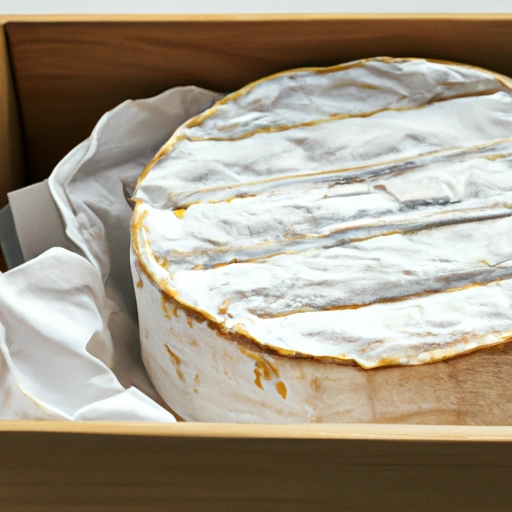Camembert
Description

Camembert is a moist, creamy, cow's milk cheese that originates from the Normandy region in France. It has a soft, edible rind that typically blossoms with white mold, encasing a pale yellow, buttery interior that becomes increasingly smooth and flavorful as it ages. Packaged in small wooden boxes, Camembert is easily recognizable and has been a treasured addition to cheese platters, baked dishes, and countless other culinary creations.
Common uses
Camembert is often enjoyed on its own, especially when it reaches room temperature and fully reveals its complex flavors and creamy texture. It is also a staple on cheese boards, paired with fruits, nuts, and various types of bread and crackers. Beyond these traditional uses, Camembert can be baked to create a delectable appetizer or used as a flavorful ingredient in sandwiches, salads, and more.
Nutritional value
Calories
One ounce (28 grams/approximately 1 inch cube) of Camembert provides about 85 calories.
Protein
Camembert offers around 5.5 grams of protein per one-ounce serving.
Fat
This cheese contains 7 grams of fat per ounce, of which 4 grams are saturated fat.
Carbohydrates
Camembert contains less than 1 gram of carbohydrates per ounce.
Vitamins
It is a good source of B vitamins, particularly B12 and riboflavin (B2).
Minerals
Camembert provides calcium and phosphorus, as well as trace amounts of zinc and selenium.
Health benefits
Camembert cheese can contribute to bone health due to its calcium content. The presence of B vitamins may support metabolism and red blood cell formation, while the protein content helps in muscle maintenance and repair.
Potential risks
As a high-fat dairy product, excessive consumption of Camembert can contribute to an increased risk of heart disease. It also contains lactose, which can be problematic for individuals with lactose intolerance. Moreover, since it is a soft cheese, there is a higher risk of listeria contamination, so pregnant women are advised to avoid it unless it is made with pasteurized milk.
Common recipes
Camembert can be used in a variety of recipes, including baked Camembert with garlic and rosemary, Camembert and apple tarts, and Camembert-stuffed chicken breasts.
Cooking methods
It can be enjoyed raw, baked, or melted into dishes. When baking, it is often cooked in its wooden box to retain shape and moisture.
Pairing with other ingredients
Camembert pairs well with light reds like Pinot Noir, fruity whites such as Chardonnay, or even a crisp cider. For food pairings, consider figs, grapes, or a drizzle of honey to complement its rich taste.
Summary
Camembert is a versatile cheese with a rich history and a distinct, creamy texture that makes it a favorite ingredient in both simple and sophisticated dishes. Its adaptability in cooking and pairing makes it a beloved choice for food enthusiasts around the world. As with all cheeses, moderation is key to enjoying its flavors while maintaining a balanced diet.